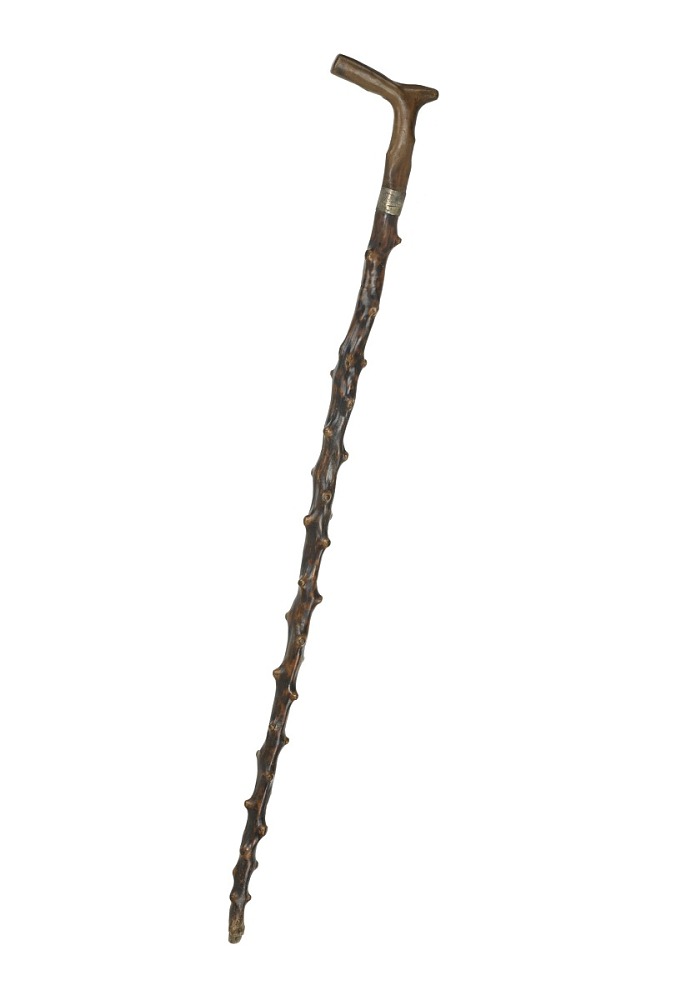As COVID-19 deaths spiked in 2020, Suzanne Firstenberg’s public art installation "In America: How could this happen…"
History Explorer Results (1131)
Related Books (0)

Grade Range:
K-12
Resource Type(s):
Artifacts, Primary Sources
Date Posted:
12/30/2009
General Charles Conrwallis was so mortified by his defeat that he dispatched his second-in-command, Brigadier General Charles O'Hara, to surrender his forces. When O'Hara offered Cornwallis's sword to George Washington, Washington, in keeping with the rigid hierarchies of military protocol, asked

Grade Range:
K-12
Resource Type(s):
Artifacts, Primary Sources
Date Posted:
2/19/2009
Carnival celebrations featuring performers dressed as devils are found in Puerto Rico and the rest Latin America. The presence of these characters during Carnival is understood by many as an ancient reference to the contest between good and evil. The devilish mask pictured here was made for the

Grade Range:
K-12
Resource Type(s):
Artifacts, Primary Sources
Date Posted:
1/29/2009
This 40-saw cotton gin and the wooden gearing came from a farm formerly owned by the Augustus C. Smith family in Monroe County, G. The gin shed was built around 1840 and operated until approximately 1900. The gin stand was probably built in the decade following the Civil War; it bears no manufact

Grade Range:
K-12
Resource Type(s):
Artifacts, Primary Sources
Date Posted:
3/12/2012
This red knit cardigan was worn by Fred Rogers, creator and host of the children's program, Mister Rogers' Neighborhood (PBS, 1968-2001). For more than thirty years, Rogers began each episode by changing into a sweater and tennis shoes and singing, "Won't you be my neighbor?"
An o

Grade Range:
K-12
Resource Type(s):
Artifacts, Primary Sources
Date Posted:
3/9/2009
This silver teapot was made by Samuel Casey of Little Rest (later Kingston, R.I.), about 1750, for Abigail Robinson, probably about the time of her marriage to John Wanton of Newport, R.I., in 1752. Shaped like an inverted pear, the teapot has silver feet and a wooden finial. The wooden handle is

Grade Range:
K-12
Resource Type(s):
Artifacts
Date Posted:
4/7/2016
This is a copper chocolate pot with a removable lid. It is an example of an English Georgian chocolate pot, but was most likely made in the United States. The stepped lid has a small cover that pivots on a rivet for a molinillo (whisk) opening. It has a seamed and dovetailed body with an elongate

Grade Range:
K-12
Resource Type(s):
Artifacts
Date Posted:
5/1/2018
The term “ballot” is derived from the Italian ballotta, meaning “little ball.” This ballot box was not used in a U.S. election. It was used by members of a Washington, D.C., social club.

Grade Range:
K-12
Resource Type(s):
Artifacts, Primary Sources
Date Posted:
9/3/2020
This cane belonged to Toussaint L’Ouverture, a military and political leader in the Haitian Revolution. The revolution began as a slave revolt in the French colony of Saint-Domingue in 1791 and ended with emancipation and the founding of the free nation of Haiti in 1804. Nearly half a million ensl

Grade Range:
4-12
Resource Type(s):
Reference Materials, Primary Sources
Date Posted:
6/10/2008
Students will learn about the 25,000 Japanese Americans who served in U.S. military units during World War II. This section of A More Perfect Union, an online exhibition, uses artifacts from the Museum's collections, primary so

Grade Range:
K-12
Resource Type(s):
Artifacts, Primary Sources
Date Posted:
10/27/2008
AbioCor Total Artificial Heart is the first electro-hydraulic heart implanted in a human. Approved by the United States Food and Drug Administration for clinical trails, the AbioCor was implanted in Robert Tools by cardiac surgeons Laman Gray and Robert Dowling on July 2, 2001, at Jewish Hospital









